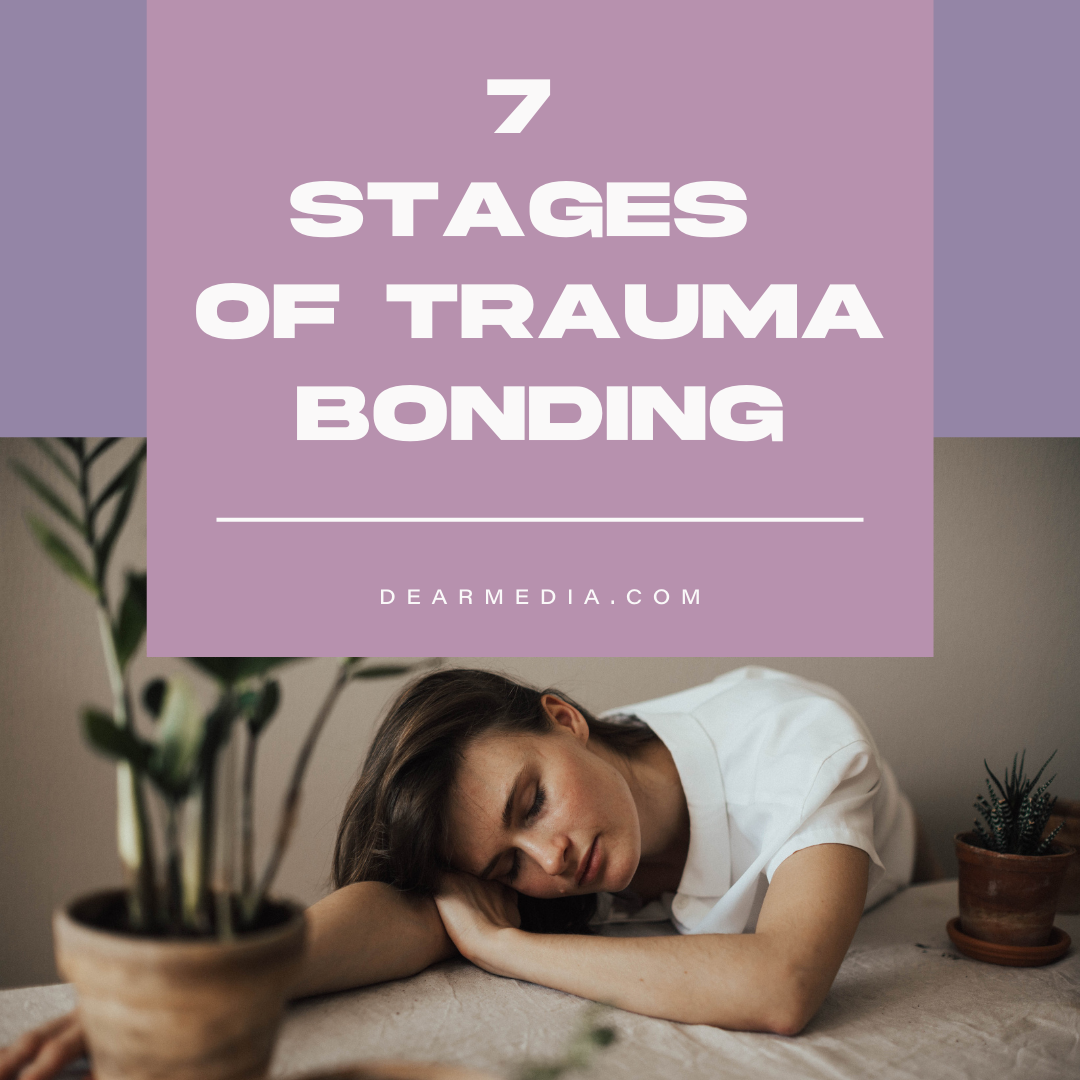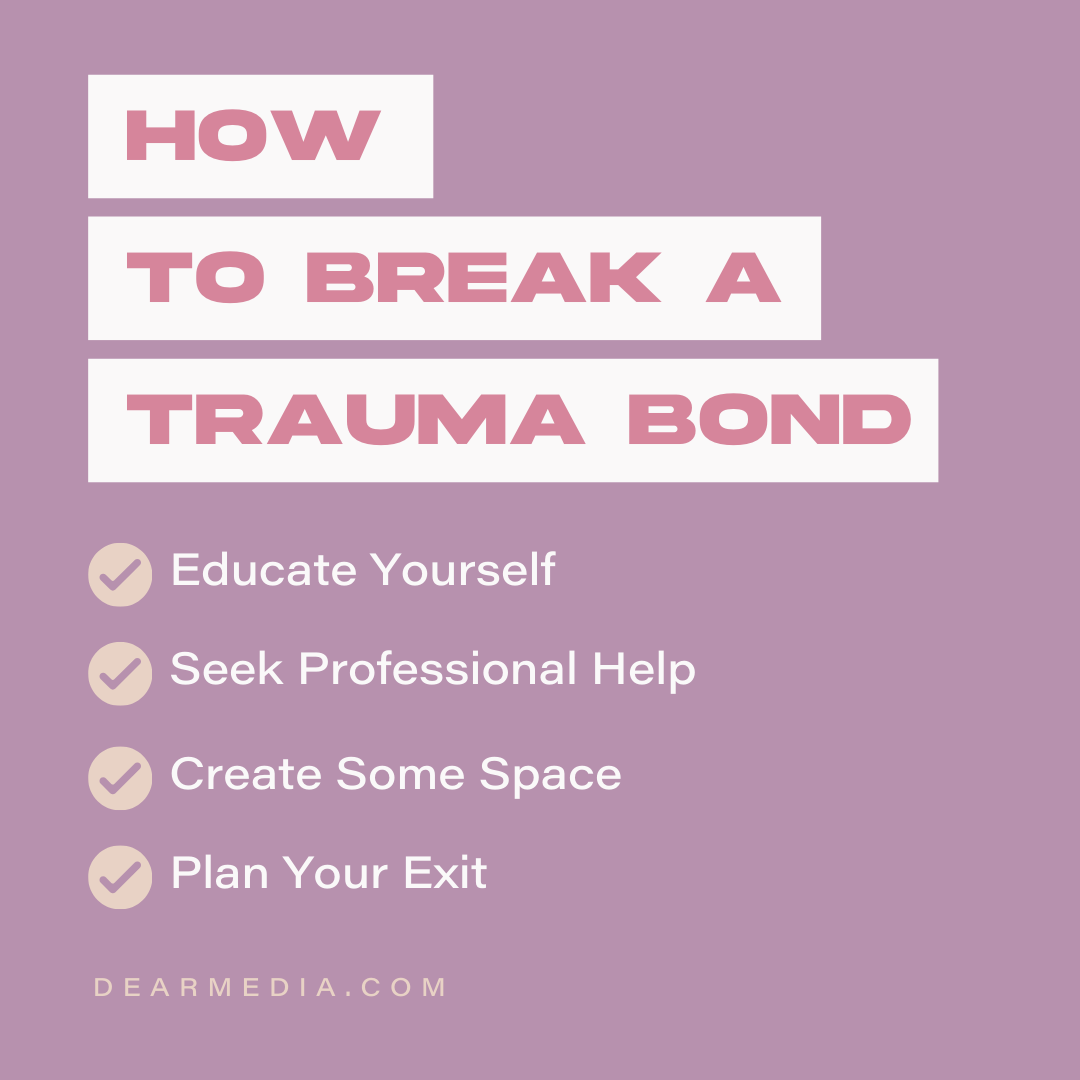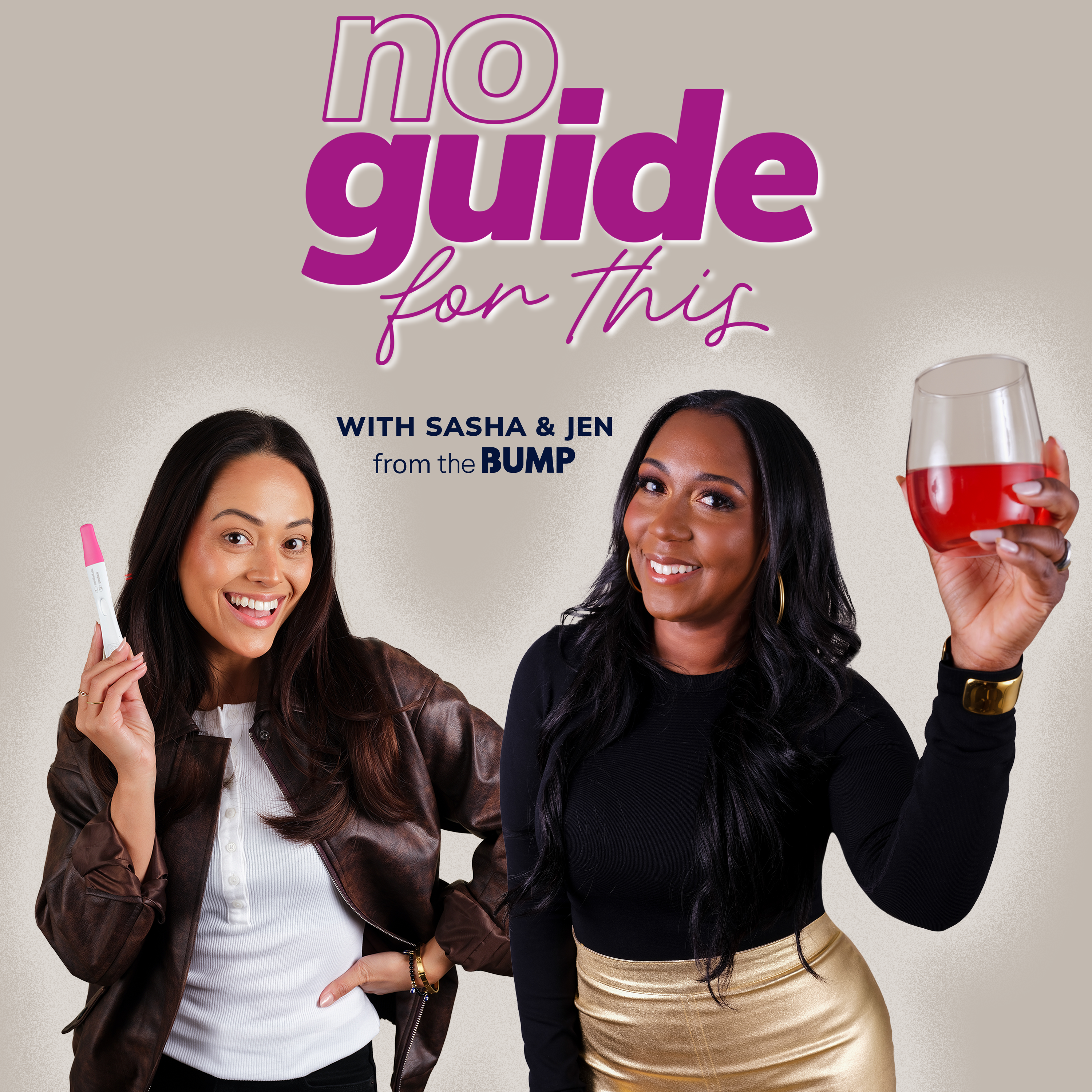What Are The 7 Stages Of Trauma Bonding?

Trauma bonding is a unique (and hella toxic) bond between an abuser and an abused person. It’s a common, but really bad coping mechanism that occurs when a person experiences serious trauma. This psychological response often happens in relationships where the abuser manipulates their partner by going back and forth between being abusive and affectionate.
Victims of trauma bonding often have an insecure attachment style (listen to this episode of the We Met At Acme podcast to learn more about attachment styles) and lack boundaries and self-esteem. This is how they get to be codependent and vulnerable to this type of abuse.
Trauma bonding is super unhealthy to say the least, and though it’s usually in romantic relationships, that’s not always the case! Trauma bonding can happen in any relationships with power imbalances like parents to children or cult leaders to their followers. (Don’t drink the Kool-Aid, guys!)
Does any of this sound familiar? Do you think you or a friend is trauma-bonded to someone? We hope not! But, it’s best to understand the 7 stages of trauma bonding, so you can identify it and respond to it before things get really bad that’s what we’ll help with today!
Here are the 7 phases of trauma bonding:

What Are The 7 Stages Of Trauma Bonding?
Stage 1: Love Bombing
In this early stage of trauma bonding, your partner will shower you with love, affection, and attention. This “love bombing” can make you feel appreciated and even needed. Who doesn’t want flowers, coffee, and tons of backrubs?
Unfortunately, in toxic relationships, this is often a manipulation tactic. This is a tactic commonly used by narcissistic people who want to gain your trust quickly, so they can use it against us later. The Narcissist is an insightful episode of the Uncut and Uncensored podcast that can help you better understand the thoughts and actions of narcissistic people.
In the meantime, know that their actions are intended to make you dependent on them as your abuser. You’ll crave their love bombing after an abusive period, and cling to the notion that your relationship can change and get better. Remember, though, love bombing isn’t hope, it’s manipulation! If you identify these cycles of abuse and affection, GET OUT.
Stage 2: Trust And Dependency
Like we mentioned, love bombing is meant to breed trust and dependency. If you don’t identify the love bombing as toxic when it happens, you’ll instead gain a deep emotional connection with your abuser. You’ll rely on them for everything from emotional support to simple decision-making. This dependency is a crucial component of trauma bonding because it gives the abuser more complete control over you!
During this stage, your abuser will likely test your reliance on them and make you feel guilty for questioning them. Doubts are totally normal and even expected in a healthy relationship as you get to know each other and build trust, which means you shouldn’t be made to feel guilty about your concerns. If you ever see this in your relationship, it’s a huge red flag! You’re probably on the road to trauma bonding!
(We get that some people really struggle to understand what a healthy relationship looks like especially if you’ve experienced trauma and lots of toxic people. To help you out, listen to this episode of We Met at Acme called What A Healthy Relationship Looks Like!)
Stage 3: Criticism And Devaluation
As the trauma bond becomes stronger, you become more dependent on the abuser. Again, you don’t do ANYTHING without their input and command. By the third stage, your abuser, who has likely earned your trust, begins to be less affectionate and more abusive.
This stage is painful and confusing. You might find yourself working even harder to get affection. But rather than complimenting you, they criticize and devalue you, leaving you in need of validation and approval. This gives them even more control over your mind and emotions!

Stage 4: Manipulation And Gaslighting
In this stage of trauma bonding, the abusive partner will use gaslighting and manipulation to make you constantly question yourself. They will often play mind games and use exaggerations or blatant lies, all while remaining eerily calm. They act like everything is chill while you feel like complete sh*t and like you’re going absolutely crazy.
As explained in the episode Gaslighting Myths & Truths from The Art of Being Well, a gaslighter won’t take responsibility for their actions. Instead, they usually blame the other person and make sure they always feel responsible for the problems in the relationship.
Stage 5: Resignation And Giving Up
By this point in a trauma bond, you’re probably going to feel powerless and helpless. If you haven’t recognized the gaslighting, you may even feel like a complete failure or a terrible girlfriend/daughter/whatever. Victims typically start to give in just to avoid more conflict. This is a kind of trauma response called fawning.
You may or may not be aware that you’re being manipulated, but your desire to avoid conflict usually outweighs your desire to leave. I mean, at this point, you’re TOTALLY exhausted from the cycle of abuse. You may even become even more submissive and dependent just to keep the peace.
Stage 6: Loss Of Sense Of Self
When you give your abuser that much control over your life, you’ll probably lose who you are. Everything from what you wear to where you work is dictated by your abuser. You may not even have any friends outside of your abuser now! It’s super isolating and your mental health will really suffer here. If all the abusive behavior wasn’t enough, now you don’t even know yourself.
Stage 7: Addiction To The Cycle
In the last stage, you can become emotionally addicted to the trauma bond. Your abuser has manipulated you into thinking you cannot live without them. You might even become so focused on your relationship that you ignore other things in your life that used to be important. This makes for an extremely toxic environment that is common in abusive relationships.
These stages are often cyclical in trauma bonds. So, you may have long periods of gaslighting and abuse and then actually return to that love bombing stage and move back through the phases. But, let’s be read, wherever you are in the trauma bonding stages is BAD NEWS. Fortunately, it IS possible to break toxic relationship patterns and free yourself from a trauma bond.

How To Break A Trauma Bond
Educate yourself.
The first step in breaking a trauma bond is educating yourself. Reading this post is a gigantic step in the right direction! Learning more about trauma bonding, how toxic relationships affect your mental health, and the various tactics your abuser uses against you can be a life-changing wake-up call.
Plan your exit.
It’s important to come up with a plan to leave your relationship safely, quietly, and without conflict ideally while your abuser is away. Your plan should include immediate access to a support system or hotline that can help you as you deal with trauma and navigate difficult and even dangerous situations.
The National Domestic Violence Hotline (USA) offers support and resources for people in abusive relationships. You can call 1.800.799.SAFE (7233) or text START to 88788.
Seek professional help.
If you’ve never even considered therapy, we highly recommend listening to this episode of Him & Her where hosts Michael and Lauryn remove the stigmas around therapy and explain why you should talk to someone.
Numerous trauma-based therapy practices are specially designed for survivors of abuse. Try to remember that by seeking professional help, healing is possible. You can slip on this Every End Is A New Beginning hoodie for each therapy session as a cozy reminder of the good fight your battling!
Here are more podcast episodes on healing from trauma to check out:
- The Art Of Being Well: How Toxic Traumas Hurt Your Health + How To Recognize Patterns + Heal Your Past
- Him & Her: How To Heal Trauma, Develop Emotional Competence, & Understanding Personality Disorders
- Him & Her: Discovering Your Inner Strength, Ridding Yourself Of Fear, & Unleashing The Person You Are Meant To Be
- The Heal Podcast: Healing Trauma and Limiting Beliefs through EFT and Reiki with Patti Penn
- The Heal Podcast: Breaking Through Trauma – Psychedelic Therapy, Hypnosis, Ketamine & More
- Dear Gabby: How I Freed My Body from Trauma – The Untold Story from Happy Days
The first step to breaking free from a trauma bond is learning what’s exactly going on!
No matter how long you’ve been stuck in a trauma bond, you CAN break free from trauma. What you’ve learned combined with the support of a professional, can help you move past physical and emotional trauma and get your life back. We’re rooting for you!
For more life-changing advice and relatable content, head over to the Dear Media blog.



















